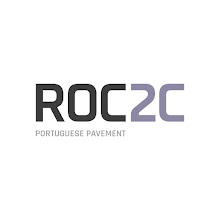Portuguese Pavements, ทางเดินโปรตุเกส, are the pride of Portuguese displaying the most spectacular art you can find on the streets. Their influence has spread far and wide into Portuguese colonies such as Macau''s Senado Square. Preserved as a World Heritage Site the Senado Square snuggles a striking Portuguese Pavement, painting black and white waves as far as your eyes can see.
Art is not a mere lifestyle for the Portuguese but life itself, as it is found u biquitously varying from refined art galleries to graffiti on streets. Walking along Portuguese streets is a one of a kind adventure as you will be surrounded by gigantic canvases, invading street walls and the paved paths.
Art on the pavements are called,ทางเดินโปรตุเกส, Calçada Portuguesa or Portuguese Pavements,葡萄牙路面, which can be found in abundance along the pavements, atriums and plazas in Portugal. It was an art founded in Mesopotamia and later introduced to the ancient Greek and Romans.

It is no easy task producing mesmerizing patterns and sketches on the ground using paving materials. The process is immensely tedious and meticulous where the artisans have to lie horizontally and fix stones with utmost precision. This process is still carried out manually which makes them invaluable in all aspects.
Portuguese Pavements aren''t only found in Portugal. The art is even popular in Macau, which was once a Portuguese colony. The most famous,ทางเดินโปรตุเกส, Portuguese Pavement found in Macau is at the Senate Square also known as Senado Square. This square and some of its buildings with historical importance are all protected as a UNESCO World Heritage Site.
As soon as you step into the Senado Square in Macau you will find giant waves of black and white stretching as far as your eyes can see. A charming fountain sits in the middle surrounded by a circular stairway.
Visitors to the square often sit on the circular platform outlining the fountain and engage in hearty conversations. Or simply gaze into the never ending beauty of the mesmerizing mosaic that unfolds before their eyes. You may feel like a tiny paint blot on a giant''s canvas when you are there.
At night when the street lights illumine the Senado Square and the buildings all bathed in vibrant golden and white glows, the,ทางเดินโปรตุเกส, Portuguese Pavement reflects the very radiance. The fountain''s many jets glow in a luminous white, reminiscent of angels descending from the heaven. It is indeed a sight to behold and admire for anyone visiting Macau.

Senado Square''s Portuguese Pavement (葡萄牙路面) starts from the main road that leads to the St. Dominic Church and ends at the famous ruins of St. Paul''s. It is often an ideal spot for meeting and spending a day out with families and friends for the locals. For the tourists it is a heart warming attraction that reminds them time and again the aesthetic richness of the Portuguese people and how much they love the essence of art.
If you are visiting Macau for your next vacation, do not forget to drop by the famous Senado Square and enjoy the beauty of pavement art. The alluring wavy patterns of the plaza, the concentric circles of the fountain and the multicoloured shades of the surrounding buildings will paint the perfect picture for you.
Haven''t decided where to stay in Macau? Then how about grabbing some of the best limited timeMacau hotel specials? And if that''s coming from the entertainment paradise, try The Venetian Macao Hotel; you can gladly look forward to a world of adventures out there. This massive Macau resort is just what you want to spend your most memorable holiday in Macau. Enjoy an overwhelming array of comforts and entertainment here and leisurely explore Macau attractions including the Portuguese Pavement at Senado Square.
 Pushpitha Wijesinghe is an experienced independent freelance writer. He specializes in providing a wide variety of content and articles related to the travel hospitality industry.
Pushpitha Wijesinghe is an experienced independent freelance writer. He specializes in providing a wide variety of content and articles related to the travel hospitality industry.
THEFREELIBRARY.COM
Photos: www.google.pt/images

Comentários
Enviar um comentário